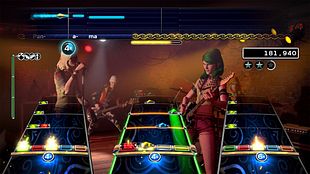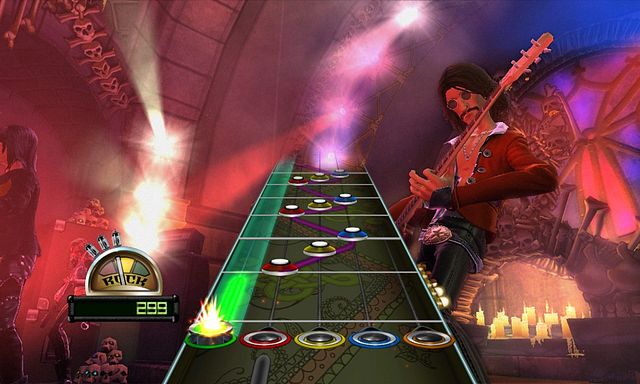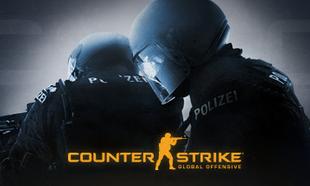Prior to the fall, there was a meteoric rise for the music rhythm game.
First released in 2005 in the United States and in 2006 in Europe for the Playstation 2, the original 'Guitar Hero' became an overnight sensation, instantly becoming a franchise in the process.
In a 2015 interview, Post Malone attributed the beginning of his musical career to the ‘Guitar Hero’ franchise, and the series’ most famously difficult song ‘Through The Fire And The Flames’ managed to crack the lower half of the American pop charts, which is no mean feat for a 7-minute speed metal song.
A 2008 report from The Independent said there were around 12 million young people aged between three and 18 in the UK, and per to a study by UK charity Youth Music, more than half of them play music games on consoles, and around 2.5 million of these have been inspired to learn real musical instruments.
The craze was lampooned everywhere from episodes of 'South Park' to Eminem music videos.
Anecdotally, the ‘Guitar Hero’ games were the game of choice for parties at friends houses and served as an inspiration to explore more obscure bands or classic rock because they were included in the games.

The late 2000’s economic recession has been cited as a factor in declining sales for the musical rhythm games; who really had €300 spare kicking around to buy a full suite of plastic music instruments?
2015’s release of ‘Guitar Hero Live’ was supposed to bring the series into the modern day, but instead served as the final nail in the coffin for the once-legendary franchise.
The idea was solid: the game was a total revamp of the existing formula; the game was in a first-person perspective, a live-action crowd reacted to the music being played, and the iconic colour scheme for the guitar dashboard was changed.
And for some reason, there was a Skrillex song on the soundtrack.
The franchise had been on hiatus since 2010’s ‘Guitar Hero: Warriors Of Rock’ which despite a solid tracking listing and a half-decent story mode, simply failed to shift the units expected from the franchise.
By 2009, the series was behind only ‘Mario’ and ‘Madden NFL’ in the United States in terms of sales, with CEO Bobby Kotick estimating sales of the games at $2 billion dollars.
That same year, 6 games under the ‘Hero’ branding were released, with two band-themed games from Van Halen and Metallica, a ‘greatest hits’ compilation of the first 3 games on one disc, ‘Band Hero’, a family-friendly effort, the mainline ‘Guitar Hero 5’ and ‘DJ Hero’.
The gameplay was as solid as ever, and ‘Guitar Hero 5’ let players have Johnny Cash sing Iron Maiden songs or Kurt Cobain sing ‘A-Punk’ by Vampire Weekend, but it was apparent it was too much too soon.

It doesn’t take a business genius to tell you the market was over-saturated, and was certainly a factor in the franchise declining shortly after that.
The franchise had simply expanded too much, too fast, much like Oasis circa 'Be Here Now'.
The October 2009 release of ‘DJ Hero’ was perhaps a sign the idea had jumped the proverbial shark.
The suggested retail price for ‘DJ Hero’ at launch was roughly €120, and that’s of course before you add in buying more songs as downloadable content.
For maximum brand synergy, players could also hook up their Guitar Hero controller and have a duelling Guitar versus DJ mode.
Sales were poor for ‘DJ Hero’ following it’s October 2009 release, while another Activision title, ‘Call Of Duty: Modern Warfare 2’ became a pop culture juggernaut, it’s easy to see why Activision went all-in on an extremely profitable first-person shooter with cultural ubiquity versus a franchise facing diminishing returns like the ‘Hero’ franchise.

Running parallel to ‘Guitar Hero’ was the ‘Rock Band’ series of games.
The creators of the first two ‘Guitar Hero’, Harmonix and RedOctane were each separately acquired by MTV and Activision respectively in 2006, and the music rhythm game officially had it’s own Blur versus Oasis rivalry.
Harmonix went on to release the first ‘Rock Band’ in 2007 in the United States, and September 2008 for Europe, and went one better on their patented ‘Guitar Hero’ formula; you could play as the whole band.
If you had enough disposable income, you too could annoy the neighbours with a cacophony of plastic drums, bass, guitar and an off-key singer.
For roughly €200, you could get the full ‘Rock Band’ experience, and the game was an immediate hit.
The following year, the upcoming ‘Guitar Hero: World Tour’ launched an offensive against ‘Rock Band 2’.
Not only could you play as the full band, you could also create your own music in the game with a built-in studio, and in peak 2008 fashion, a digitally rendered Hayley Williams would join players on stage to sing ‘Misery Business’.
The press dubbed it as a “virtual battle of the bands” and in the end, ‘Guitar Hero: World Tour’ came out on top sales-wise, while ‘Rock Band 2’ had to settle for better critical scores.
Konami tried getting in on the act with ‘Rock Revolution’ around the same time, but was utterly demolished in sales; data from the United States showed it only shifted 3,000 copies in it’s first month.
Not only did the music rhythm game have its very own Blur versus Oasis rivalry, it spawned it's own imitators as well – ‘Rock Revolution’ was the Kula Shaker in this metaphor.
‘The Beatles: Rock Band’ was released in September 2009 to much fanfare, including having a befuddled Paul McCartney and Ringo Starr on stage at 2009’s E3 conference, but the game undersold, as did ‘Guitar Hero: Metallica’ which was released in May 2009 despite having a fully motion-capped James Hetfield and co strutting their stuff.
2010’s ‘Rock Band 3’ was the series’ best iteration yet; the display was sleek and accessible, the on-disc tracklist was varied with old and new classics (this writer is in Faith No More’s top 1% fans on Spotify and directly attributes this to ‘Midlife Crisis’ being on the ‘Rock Band 3’ track list) and the Rock Band Network offered thousands upon thousands of downloadable tracks, from internet memes to up-and-coming rock acts of the day.
The cherry on the top was the inclusion of the “Pro” mode, where the game would actually try teach you the songs for real on instruments that looked more like the real thing than a cheap Fisher-Price toy.
‘Rock Band’ was arguably more successful in the long term than ‘Guitar Hero’ as ‘Rock Band 3’ received consistent DLC support until near the release of ‘Rock Band 4’ in October 2015, but by the early 2010’s the craze of music rhythm games was over; instead of attracting millions, it now served a dedicated, niche audience.

2015 proved to be an Annus Horribilis for both ‘Guitar Hero’ and ‘Rock Band’ as both announced big comebacks, and much like Guns ‘N’ Roses ‘Chinese Democracy’ the comeback was a modestly successful comeback at best, and ruinous to the genre at worst.
Both games were attempting to introduce themselves to a new generation of gamers while also trying to make a comeback to a culture that had grown largely apathetic towards them.
‘Guitar Hero Live’ and ‘Rock Band 4’ sold well below industry and internal expectations, resulting in lay-offs at both companies that produced the games.
In the case of ‘Guitar Hero Live’ the games model of releasing new content was tied to a system called “GHTV” where players could play a list of rotating songs.
The servers for the game were shut down in 2018, essentially hobbling the game and reducing players to the 42 tracks that were on the disc and leaving the base game worthless – because who the hell wants to play a song by The 1975?

‘Rock Band 4’ fared slightly better in terms of support, with content still being released to this day for the game, which serves the games small, but dedicated fanbase.
A telling sign of the franchises waning star power was an attempt to bring ‘Rock Band 4’ to PC by developers Harmonix after their publisher Electronic Arts declined to port the game to PC, and the fundraising campaign only 52% of the total funds needed.
The campaign managed to raise an impressive $800,000 dollars from backers, but considering sales of ‘Rock Band’ were estimated to be over a billion dollars at its peak, the reality had set in for Harmonix; ‘Rock Band’ was no longer the titan it once was.
The Harmonix story does have somewhat of a happy ending: in 2020, they put out ‘Fuser’ which is a more modern iteration of the ‘Guitar Hero’ formula but with a twist; you can mash together different genres such as rock, hip hop, dance, pop and country to create a DJ mix.
There is no need to purchase a plastic periphery for Fuser; all the player needs is a controller.
‘Fuser’ is solid fun and a reminder that the music rhythm game still exists, and is worth a go at the very least so you can try your hand at mashing up Dua Lipa and Blue Oyster Cult.
Could the plastic instrument craze sweep gaming again? It’s difficult to tell.
No one could have predicted Battle Royale game modes would have become the next big thing in gaming or the Ubisoft sandbox game was the template to follow.
To paraphrase Bono, the game industry works in Mysterious Ways.









































































